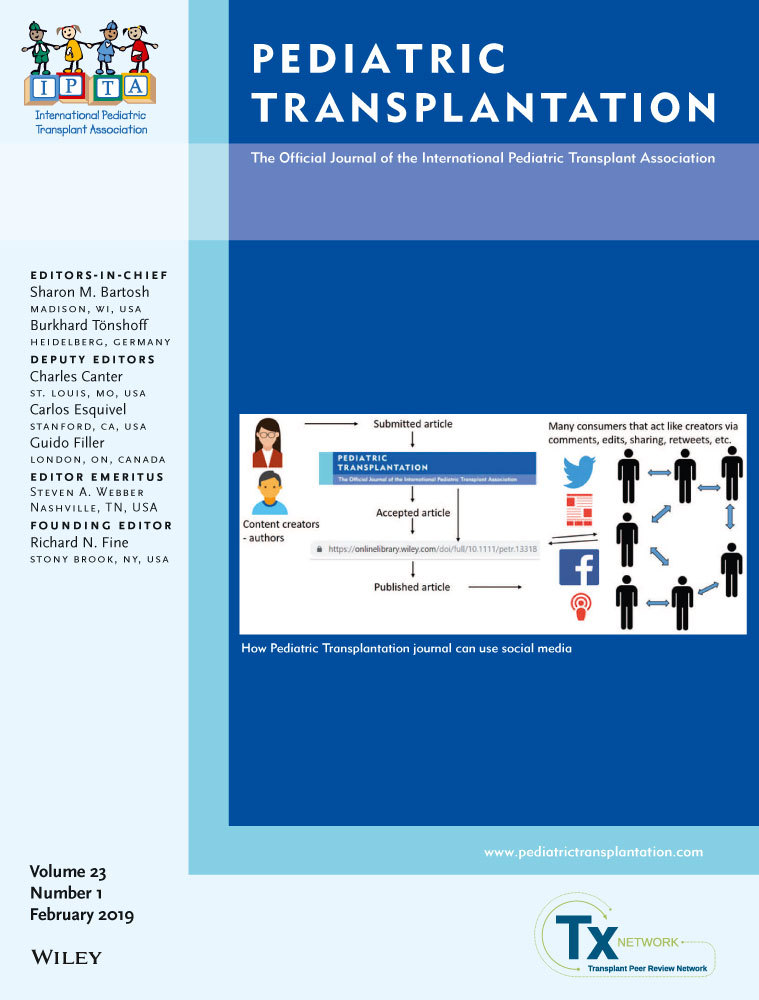The prevalence and outcome of children with failure to thrive after pediatric kidney transplantation
Abstract
Background
Prior to transplantation, effects of advanced CKD contribute to malnutrition and impaired growth. After transplant, children are expected to thrive, however, in a subset of transplant recipients this does not occur. Factors associated with post-transplant FTT are poorly understood.
Objective
A retrospective cohort study was conducted to determine factors associated with FTT and association of FTT with infections and hospitalizations.
Methods
Records of 119 children transplanted between 2005 and 2016 were reviewed. FTT was defined by ≥2 of the following post-transplant criteria: (a) low BMI or deceleration in BMI z-score, (b) poor growth velocity, and (c) chronic hypoalbuminemia at 1 or 3 years post-transplant. Association of FTT with deceased donor transplant, de novo DSA, intolerance to MMF, anemia, vitamin D deficiency, and CIC was investigated by logistic regression. Poisson regression was used to identify outcomes associated with FTT.
Results
Low pre-transplant BMI and post-transplant CIC dependence were independently associated with FTT after transplant. Odds of FTT at 1 year post-transplant decreased by 0.5 for each 1 unit increase in pre-transplant BMI z-score. Requirement for CIC conferred 3.8 and 7.8 higher odds of FTT at 1 and 3 years. Patients with FTT had 2.7 and 2.6 times infections and hospitalizations during the first year, and 4.2 and 4.3 times infections and hospitalizations over 3 years post-transplant.
Conclusions
Children with low BMI prior to transplant and those requiring CIC after transplant are at increased risk for post-transplant FTT. FTT is associated with adverse outcomes, evidenced by increased infections and hospitalizations.




